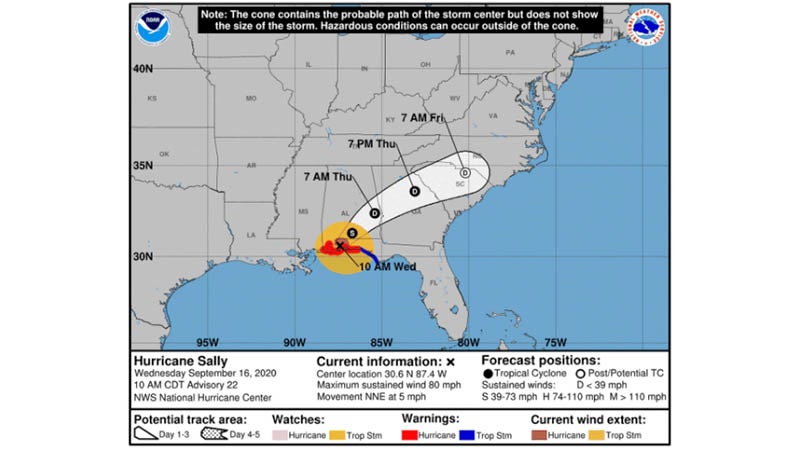NOAA predicts below normal season
Published 12:01 am Saturday, May 30, 2015
The National Oceanic and Atmospheric Administration announced Thursday that the 2015 hurricane season will be below normal.
According to NOAA, there is a 70 percent likelihood for a below-normal season in the Atlantic, but a 70 percent above-normal season in the Eastern Pacific.
Hurricane season starts on Mon., June 1 and ends Nov. 30.
NOAA predicts that there will be six to 11 named storms with winds 39 miles per hour or higher, of which three to six could become hurricanes with wins more than 74 mph
Even though a below-normal season is predicted, there is also a 20 percent chance of a near-normal season, and a 10 percent chance of an above-normal season.
“A below-normal season doesn’t mean we’re off the hook. As we’ve seen before, below-normal seasons can still produce catastrophic impacts to communities,” said NOAA Administrator Kathryn Sullivan, Ph.D., referring to the 1992 season in which only seven named storms formed, yet the first was Andrew – a Category 5 Major Hurricane that devastated South Florida.
What will suppress the hurricane season this year is El Niño, which is already affecting wind and pressure patterns, NOAA’s lead forecaster Gerry Bell said.
“El Niño may also intensify as the season progresses, and is expected to have its greatest influence during the peak months of the season. We also expect sea surface temperatures in the tropical Atlantic to be close to normal, whereas warmer waters would have supported storm development.”
Here are some tips to get prepared for the 2015 Hurricane Season:
• Build an emergency kit, and make a family communication plan;
• Know your surroundings;
• Learn the elevation level of your property and whether the land is flood-prone;
This will help you know how your property will be affected when storm surge or tidal
flooding are forecasted;
• Identify levees and dams in your area and determine whether they pose a hazard
to you;
• Learn community hurricane evacuation routes and how to find higher ground.
Determine where you would go and how you would get there if you needed to
evacuate;
• Make plans to secure your property. Cover all of your home’s windows.
Permanent storm shutters offer the best protection for windows. A second option is to
board up windows with five-eighths of an inch exterior grade or marine plywood, cut
to fit and ready to install. Another year-round option would be installation of
laminated glass with impact-resistant glazing. Tape does not prevent windows from
breaking;
• Install straps or additional clips to securely fasten your roof to the frame structure.
This will reduce roof damage;
• Be sure trees and shrubs around your home are well trimmed so they are more
wind resistant;
• Clear loose and clogged rain gutters and downspouts;
• Reinforce your garage doors; if wind enters a garage it can cause dangerous and
expensive structural damage;
• Plan to bring in all outdoor furniture, decorations, garbage cans and anything else
that is not tied down;
• Determine how and where to secure your boat;
• Install a generator for emergencies;
• If in a high-rise building, when high winds are present, be prepared to take shelter
on a lower floor because wind conditions increase with height, and in a small interior
room without windows. When flooding may be occuring, be prepared to take shelter
on a floor safely above the flooding and wave effects; and,
• Consider building a safe room.




